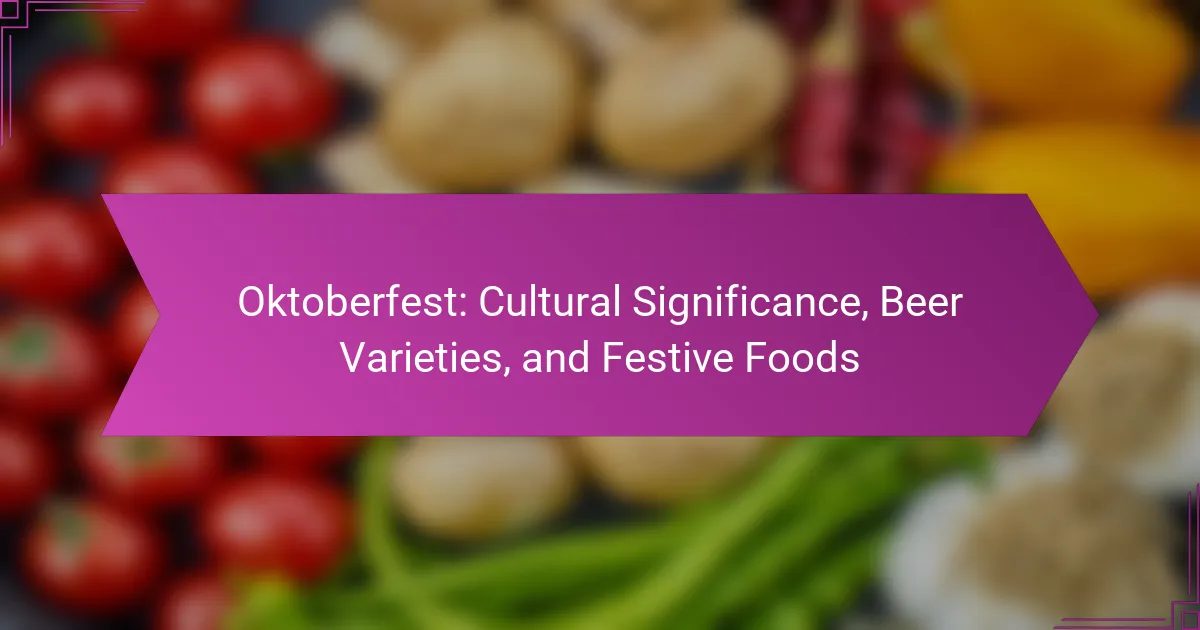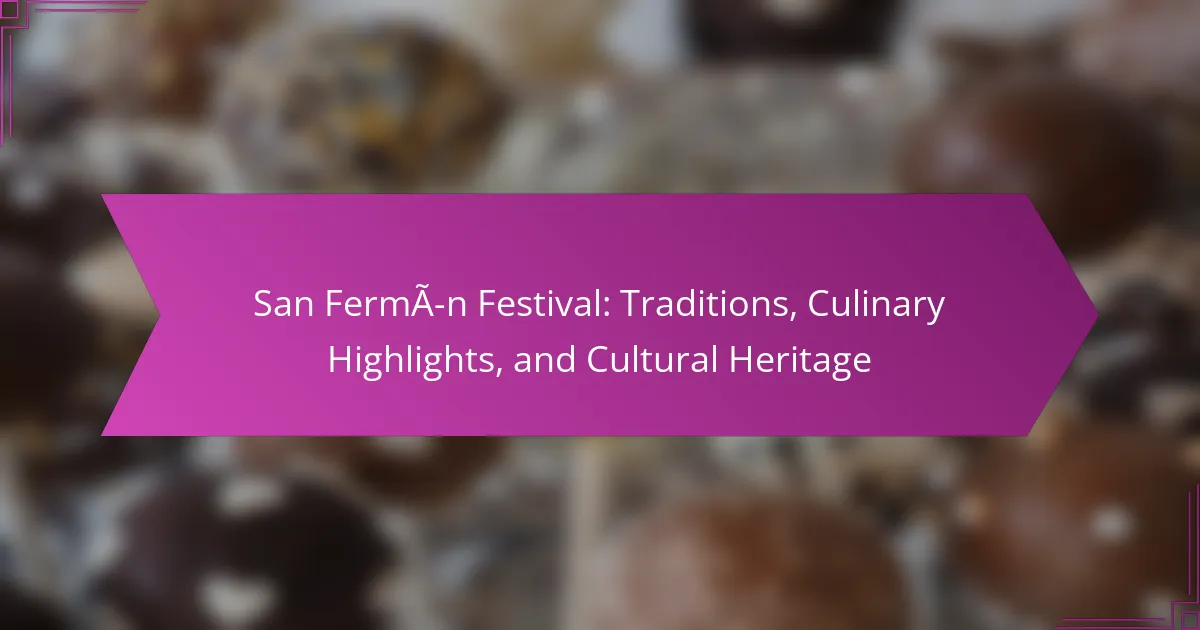La Tomatina is a vibrant festival in Buñol, Spain, known for its massive tomato-throwing event. This article explores its origins, local customs, and significant impact on gastronomy. Discover how this unique celebration fosters community spirit and influences culinary traditions. Learn about the festival’s evolution into a global attraction and its role in promoting local tourism.
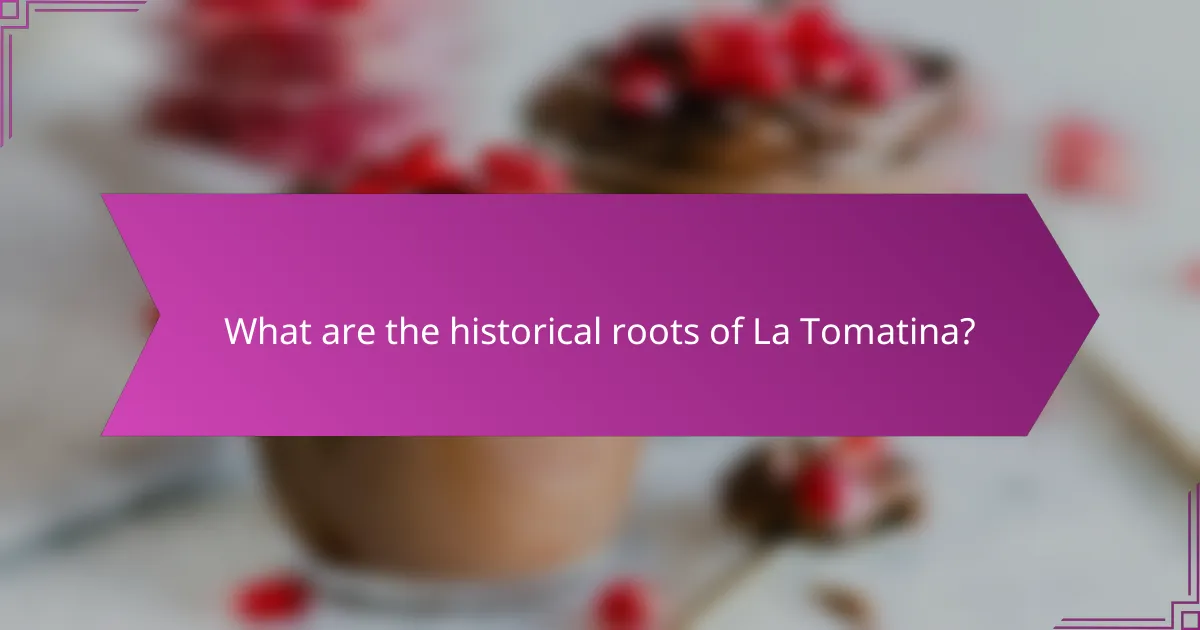
What are the historical roots of La Tomatina?
La Tomatina originated in 1945 during a local festival in Buñol, Spain. The event began when festival-goers engaged in a playful food fight using tomatoes. This spontaneous act of fun quickly became a tradition, evolving into the annual tomato-throwing festival known today. The festival’s popularity has grown, attracting thousands of participants each year, significantly impacting local tourism and gastronomy. The unique attribute of La Tomatina is its transformation from a local custom into a globally recognized event, showcasing community spirit and enjoyment.
How did La Tomatina evolve from its origins?
La Tomatina evolved from a local festival in Buñol, Spain, into an internationally recognized event. Initially, it began in 1945 when participants engaged in a spontaneous tomato fight during a local parade. Over the years, it gained popularity, attracting tourists and media coverage. Today, La Tomatina symbolizes community spirit and culinary celebration, showcasing the region’s agricultural heritage. The event now draws thousands, emphasizing its gastronomic impact on local cuisine and tourism, with an estimated 20,000 participants in recent years.
Which key events shaped the festival’s development?
La Tomatina’s development was shaped by several key events, including its origins in 1945, the first official festival in 1952, and the establishment of local customs. The festival began as a spontaneous food fight among friends, evolving into a significant cultural event over the decades. In 1980, it gained national recognition, attracting tourists and media attention, which further solidified its status. Additionally, the festival’s gastronomic impact has led to various culinary traditions inspired by the event, highlighting the importance of tomatoes in local cuisine.

What local customs are integral to La Tomatina?
La Tomatina features customs such as communal participation, tomato throwing, and celebratory music. These practices foster community spirit and attract visitors. The event, held annually in Buñol, Spain, emphasizes joy and unity among participants. Local traditions enhance the festival’s unique atmosphere, making it a cultural highlight.
How do participants prepare for the event?
Participants prepare for La Tomatina by following several key steps. First, they wear old clothes to avoid damage from the tomato stains. Second, they arrive early to secure a good spot in the town square. Third, they hydrate adequately before the event to handle the physical demands. Lastly, they familiarize themselves with the event’s rules to ensure safety and enjoyment.
What are the traditional rituals associated with La Tomatina?
La Tomatina features several traditional rituals, including the pre-festival paella cooking, the tomato fight itself, and the symbolic celebration of community. Participants often dress in white, which becomes a canvas for the tomato splatters. The event culminates in a communal gathering, emphasizing unity and joy among locals and visitors alike.
Which community roles are vital during the festival?
The vital community roles during La Tomatina include organizers, volunteers, local businesses, and security personnel. Organizers ensure the event runs smoothly, while volunteers help manage logistics and support participants. Local businesses provide food, drinks, and accommodations, enhancing the festival experience. Security personnel maintain safety and order throughout the event. Each role contributes significantly to the festival’s success and community spirit.
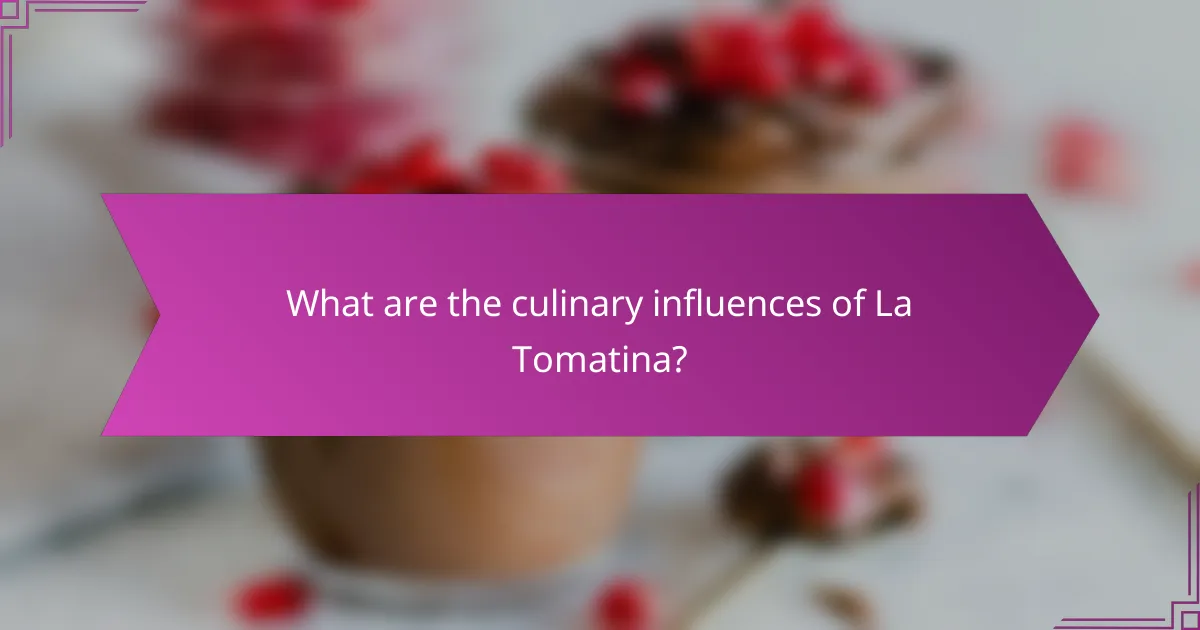
What are the culinary influences of La Tomatina?
La Tomatina has significantly influenced local culinary practices by promoting tomato-based dishes. The festival encourages the use of ripe tomatoes, enhancing traditional recipes. Local cuisine features dishes like gazpacho and salsa, which highlight tomato’s versatility. As a result, the festival has become a catalyst for culinary creativity and regional pride.
How does La Tomatina impact local gastronomy?
La Tomatina significantly influences local gastronomy by promoting tomato-based dishes and culinary creativity. The festival fosters a vibrant food culture, encouraging local restaurants to innovate with seasonal ingredients. For example, many eateries create special menus featuring tomato-centric recipes during the event. This culinary focus not only enhances local cuisine but also attracts tourism, boosting the economy. As a result, La Tomatina has become a catalyst for gastronomic exploration and community engagement in Buñol.
Which dishes are inspired by the festival?
Dishes inspired by La Tomatina include tomato-based recipes that celebrate the festival’s spirit. Popular dishes are gazpacho, a refreshing cold soup made with blended tomatoes and vegetables, and pisto, a ratatouille-like dish featuring sautéed tomatoes, peppers, and zucchini. Additionally, tomato paella showcases the use of ripe tomatoes in traditional Spanish rice dishes. These recipes reflect the festival’s cultural significance and the abundance of tomatoes in the region.
What are the economic benefits of La Tomatina for local businesses?
La Tomatina significantly boosts local businesses by increasing tourism and generating revenue. The festival attracts thousands of visitors, leading to higher sales in restaurants, hotels, and local shops. For example, during the event, local accommodations often see occupancy rates exceed 90%. Additionally, vendors selling food and souvenirs experience a surge in demand. The unique cultural aspect of La Tomatina enhances the town’s visibility, fostering long-term economic growth through repeat tourism. Overall, the festival’s economic impact is a vital aspect of its appeal.

What unique attributes distinguish La Tomatina from other festivals?
La Tomatina is distinguished by its unique attribute of being a large-scale tomato fight, unlike any other festival. This annual event occurs in Buñol, Spain, and involves participants throwing overripe tomatoes at each other. The festival’s origins trace back to 1945, rooted in a local dispute during a parade. The communal spirit and sheer messiness set it apart from more traditional celebrations. Additionally, the festival attracts thousands of visitors, significantly impacting local gastronomy and tourism, showcasing the town’s culinary heritage.
How does La Tomatina’s approach to food waste differ from other events?
La Tomatina’s approach to food waste emphasizes celebration and community impact, setting it apart from other events. Unlike typical food festivals that focus on consumption, La Tomatina uses overripe tomatoes as a playful medium, reducing waste while fostering local traditions. This unique attribute transforms potential waste into a vibrant spectacle, promoting environmental awareness through joy. As a result, the festival highlights sustainable practices within its festive framework, encouraging participants to consider the implications of food waste in their own lives.
What are the rare experiences that participants can encounter?
Participants in La Tomatina can encounter rare experiences such as unique cultural interactions, unexpected friendships formed during the event, and the thrill of being part of a massive, playful food fight. Additionally, witnessing the transformation of the town into a sea of red and the sense of community among participants create memorable moments. The festival’s chaotic atmosphere, combined with its historical significance, offers a one-of-a-kind adventure that few other events can replicate.
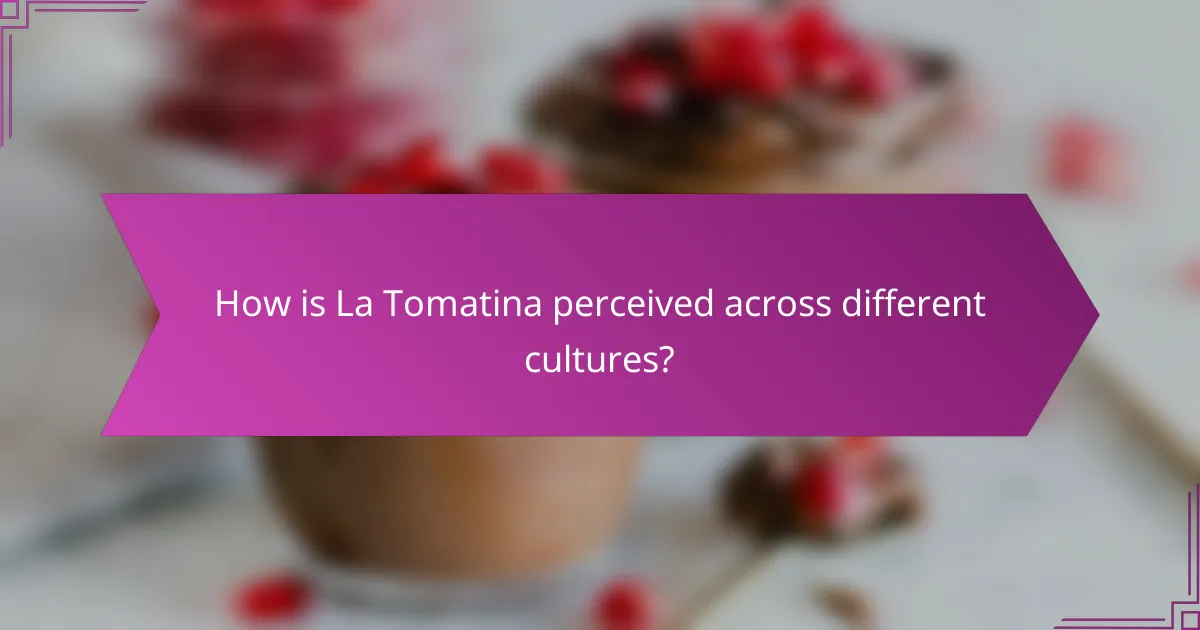
How is La Tomatina perceived across different cultures?
La Tomatina is perceived as a joyful celebration of community and culture in many regions. In Spain, it embodies local tradition and camaraderie, while in other cultures, it symbolizes playful rebellion against convention.
Countries outside Spain often view La Tomatina as a unique spectacle, sparking interest in food-related tourism. For example, in Japan, similar tomato festivals have emerged, reflecting cultural adaptations.
The event’s gastronomic impact is notable, with increased demand for tomatoes and related products in participating regions. This phenomenon showcases how local customs can influence global culinary trends.
Overall, La Tomatina serves as a bridge between cultures, inviting diverse interpretations while promoting unity through festivity.
What variations of La Tomatina exist in other countries?
Variations of La Tomatina can be found in several countries, showcasing local customs and adaptations. In Buñol, Spain, the original festival involves participants throwing tomatoes at each other. In Italy, the “Battle of the Oranges” in Ivrea features orange-throwing instead of tomatoes. In Japan, the “Yokohama Tomato Festival” includes tomato-themed events and food. In the United States, some towns host tomato festivals with games and food contests, reflecting local culture. Other countries, like Colombia and Mexico, celebrate similar food-based festivals, highlighting regional interpretations of La Tomatina’s spirit.
How do international visitors experience La Tomatina differently?
International visitors experience La Tomatina as a vibrant cultural event, often with a sense of novelty and excitement. They engage in the festivities differently, focusing on the communal aspect and the unique tradition of tomato throwing. Many international attendees come with a spirit of adventure, seeking to immerse themselves in local customs. Their participation often emphasizes the fun and social connections made during the event, contrasting with the locals who may view it as a longstanding tradition. The gastronomic impact is also notable, as visitors often explore local cuisine in conjunction with the festival, enhancing their overall experience.

What are the best practices for attending La Tomatina?
To attend La Tomatina effectively, arrive early, wear old clothes, and protect your eyes. Stay hydrated, follow local customs, and enjoy the festive atmosphere.
1. Arrive early to secure a good spot.
2. Wear old clothing that you don’t mind ruining.
3. Use goggles or sunglasses to protect your eyes.
4. Stay hydrated before and during the event.
5. Respect local customs and fellow participants.
6. Enjoy the experience and embrace the fun.
What should first-time attendees know before participating?
First-time attendees should prepare for a vibrant and messy experience at La Tomatina. Understanding key customs enhances participation.
1. Wear old clothes; they will get stained and ruined.
2. Arrive early to secure a good spot; the event is crowded.
3. Follow local rules, such as avoiding glass bottles and using only tomatoes.
4. Stay hydrated; the event can be physically demanding.
5. Embrace the spirit of fun and camaraderie; it’s a celebration of community.
How can participants ensure a safe and enjoyable experience?
Participants can ensure a safe and enjoyable experience at La Tomatina by following guidelines. First, wear old clothes and protective eyewear to prevent injuries. Second, stay hydrated, particularly in the warm weather. Third, respect others and maintain a friendly atmosphere to enhance enjoyment. Lastly, follow local rules and regulations to ensure safety during the event.
What common mistakes should be avoided during La Tomatina?
To avoid common mistakes during La Tomatina, participants should follow key guidelines. Firstly, neglecting to wear protective eyewear can lead to eye irritation from tomato juice. Secondly, throwing hard objects is dangerous and against the spirit of the event. Thirdly, failing to stay hydrated can result in exhaustion due to the physical activity involved. Lastly, not respecting local customs and traditions can diminish the experience for both participants and locals.


